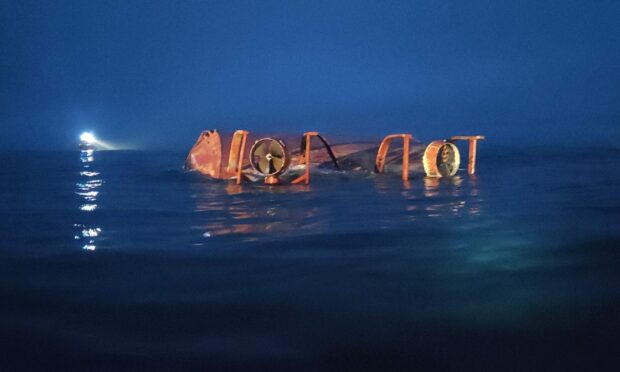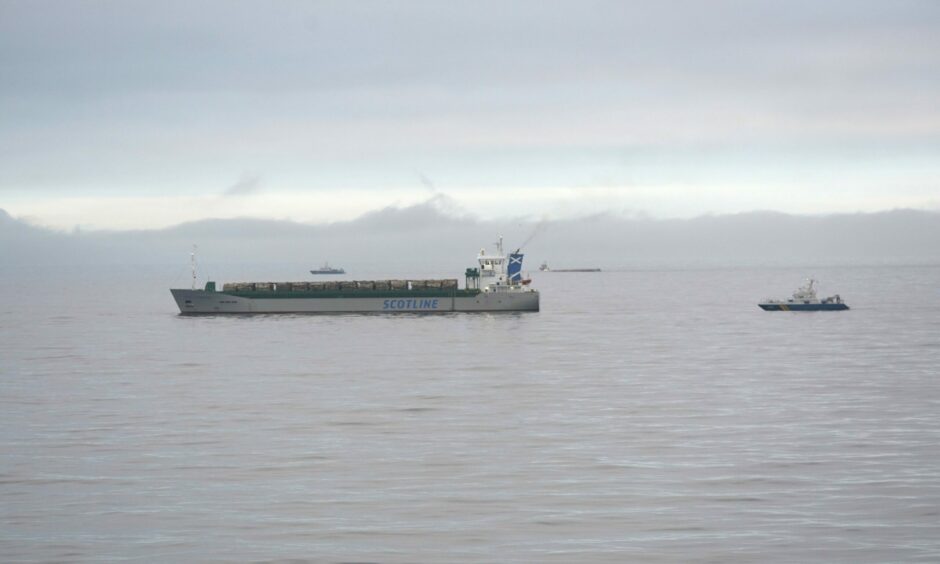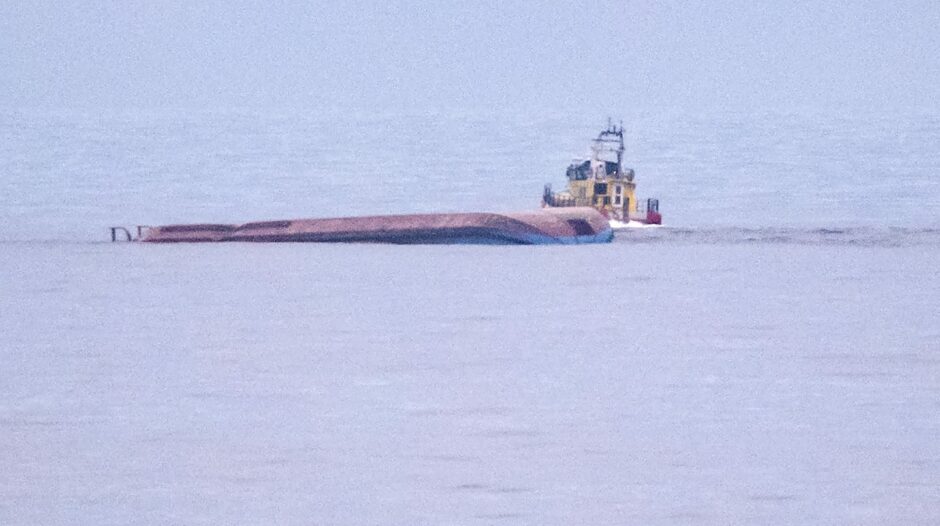A crewman onboard an Inverness-registered cargo ship was distracted by his tablet prior to a collision with a Danish vessel, investigators have found.
The Scot Carrier was heading towards Montrose on the Baltic shipping route off Sweden when it collided with the MV Karin Hoj on December 13, 2021.
As a result, the Danish split hopper barge capsized and two crew members died.
Last year, a 30-year-old British seaman was charged with negligent manslaughter in connection with the incident.
The Marine Accident Investigation Branch (MAIB) has now published its findings after completing a full investigation into the collision.
Scot Carrier collision investigation
Investigators have found that the watchkeeper on the Scot Carrier, managed by Intrada Ships Management Limited, changed course without making sure it was safe to do so.
The report adds that he had been distracted by a tablet computer and “may have been influenced by alcohol”.
The report states: “The vessels collided after the second officer on board Scot Carrier altered course at a planned waypoint without checking the traffic in the area or that it was safe to execute the manoeuvre.
“Following the collision, Scot Carrier’s second officer did not immediately call the master or raise the alarm, but returned the ship to its original course and speed.
“Danish and Swedish coastguards were alerted to the incident following the activation of Karin Høj’s emergency beacon and determined that the two ships might have collided.”
No lookouts onboard vessels
Neither watchkeeper on the two vessels reacted to the developing situation – or took action in time to prevent the collision.
The report adds that collision became “inevitable”.
MAIB recorded that the equipment used to warn of vessels in the proximity was “either diabled, unused, or not configured to alert”.
It was possible that “patchy mist and fog” had reduced visibility in the area, however, a lookout had not been in place on either vessel and no fog signals had been sounded.
The safety issues identified by investigators were viewed as being “direct” contributors to the collision.
The Maritime and Coastguard Agency has been recommended to advise the shipping industry that posting a lookout is a requirement in UK waters and on UK ships during hours of darkness.
Safety recommendations
Following the conclusion of the investigation, MAIB has made a number of safety recommendations.
Intrada Ships Management Limited have been advised to review the results of its navigational audits to determine what additional training is required.
Karin Høj’s owners have been recommended to monitor its crewing levels so they are manned at all times.
Andrew Moll, chief inspector of marine accidents, said: “The collision between Scot Carrier and Karin Høj resulted in the tragic deaths of two seafarers.
“International requirements are clear that posting an additional person on the bridge as a dedicated lookout is vital to safe navigation. However, this investigation is one of many that have found that the watchkeepers were alone on the bridge at night.
“This report also highlights the dangers of distraction from watchkeeping duties. While shipping companies may have procedures to address distraction, seafarers are also responsible for acting professionally; watchkeeping is a safety critical task.”



Conversation